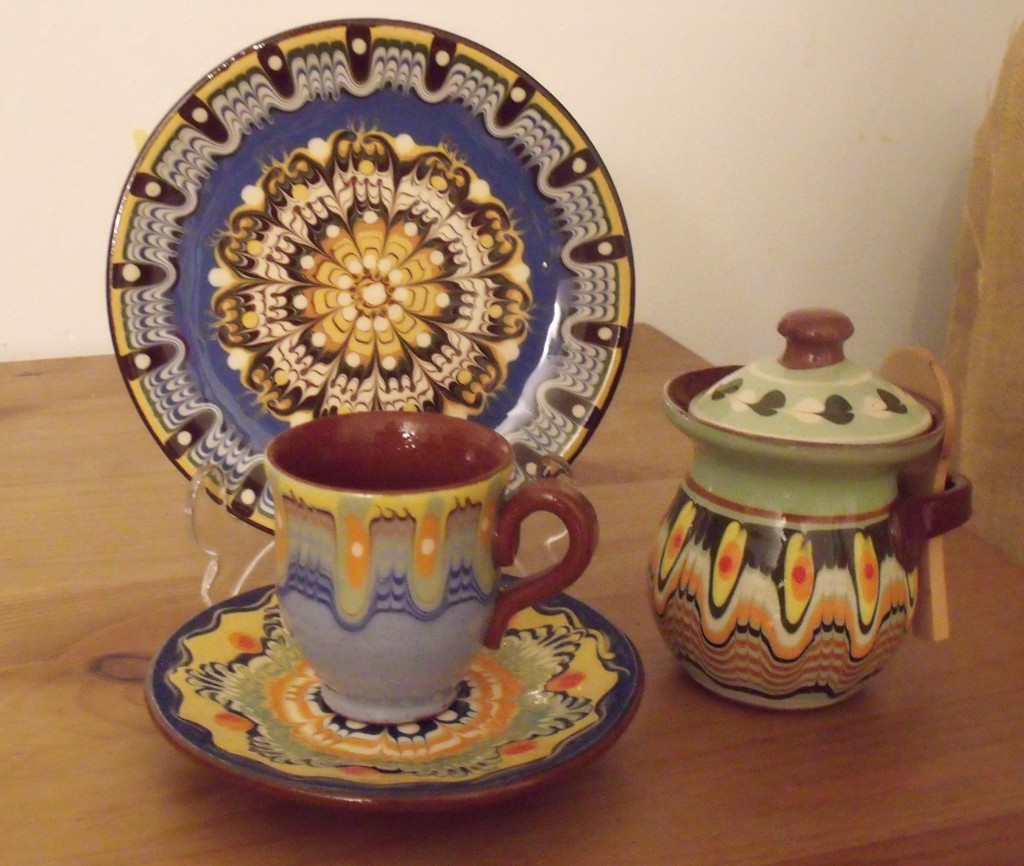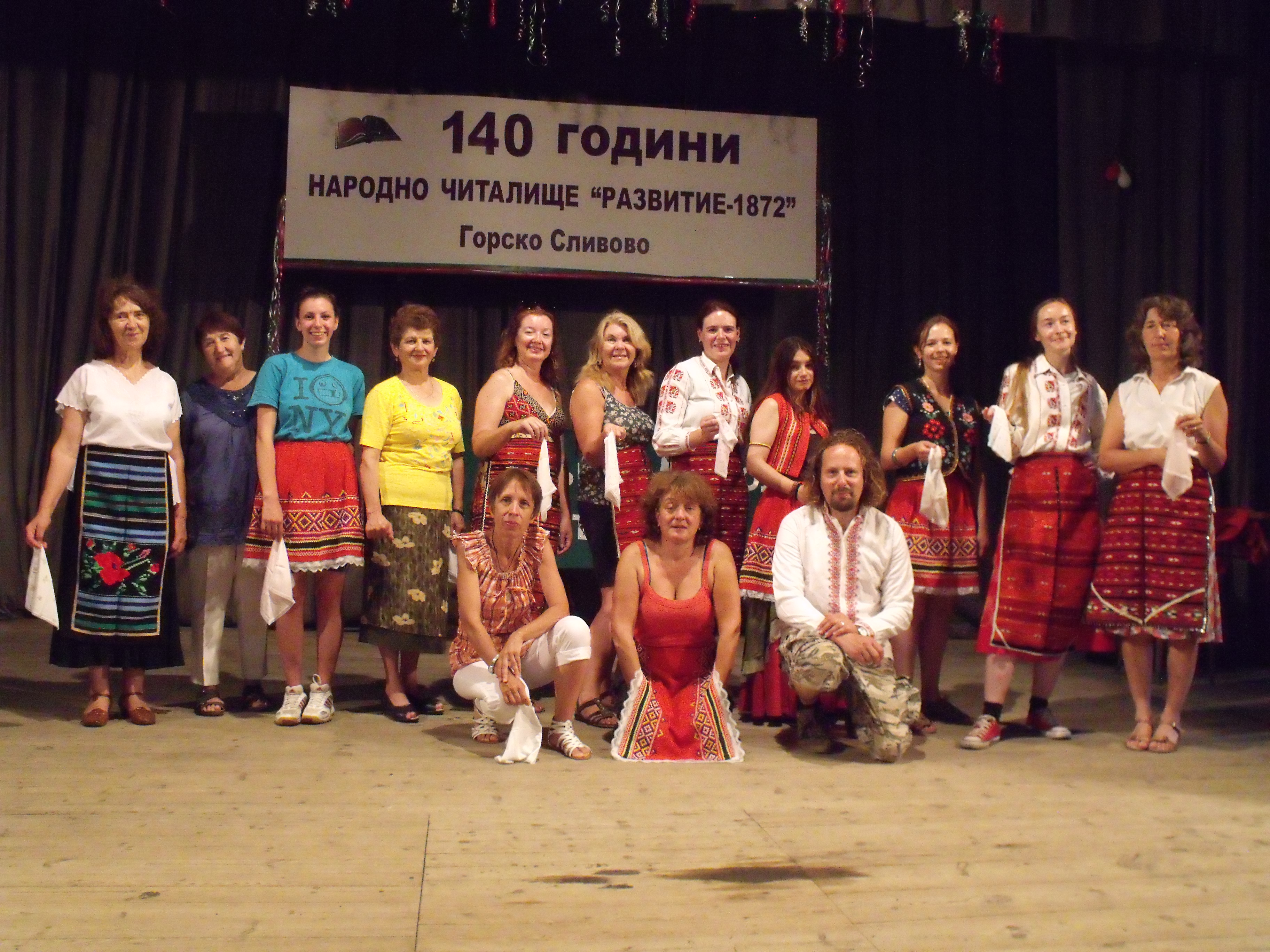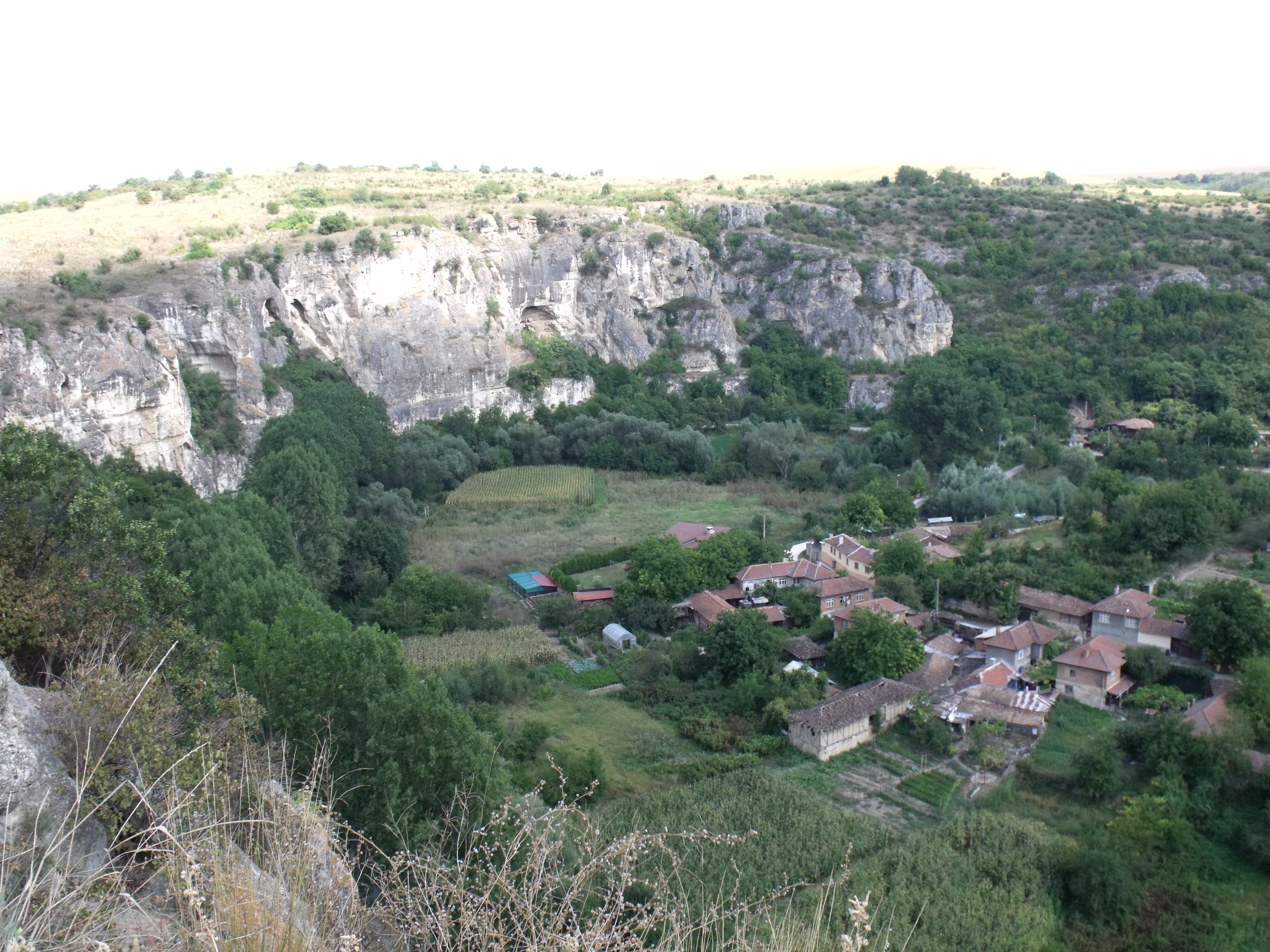Following a day of medieval history, archaeological finds and dramatic landscapes we headed to the small village of Gorsko Slivovo, near the Devetaki Plateau. Our accommodation for the next two nights was to be the Bilkarskata Kashta – the ‘Herbalist’s House’ run by hospitable and friendly couple Mariella and Misho. The house lived well up to its name. The large garden was full of plants and flowers, a huge variety of herbs, a plot of tomato plants, grape vines and more. The terrace was decorated with bunches of the dried herbs along with other curios around a wooden roof and a large table. All the rooms had their own unique style and personal touches, lavender on the pillow being my favourite. They had a comfortable hammock which I enjoyed an early evening sunbathe in, an outdoor solar-powered shower and compostable toilet, and even a small pool.
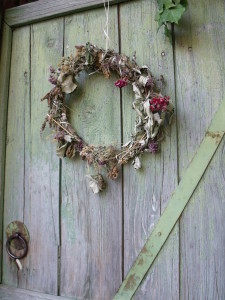
Almost immediately upon arrival, a huge loaf of home-made light fluffy, almost brioche-like bread was brought out to the table, along with home-made cheese, herbal tea and locally made honey (this place is pretty well self-sustained!). The tea contained a huge variety of herbs from the garden – thyme, rose hips, chamomile, mint and probably a few more I’ve forgotten. We would have much of this delicious tea, variations of the bread and cheese over the next couple of days.
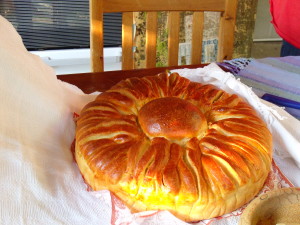
Not long after this ‘snack’, the dinner was served – a feast even more delicious than I expected. A fresh salad of the home-grown rich juicy tomatoes, peppers, herbs and onions along with peppers stuffed with cheese and egg, aubergine puree and honey-glazed chicken. Absolutely delicious!
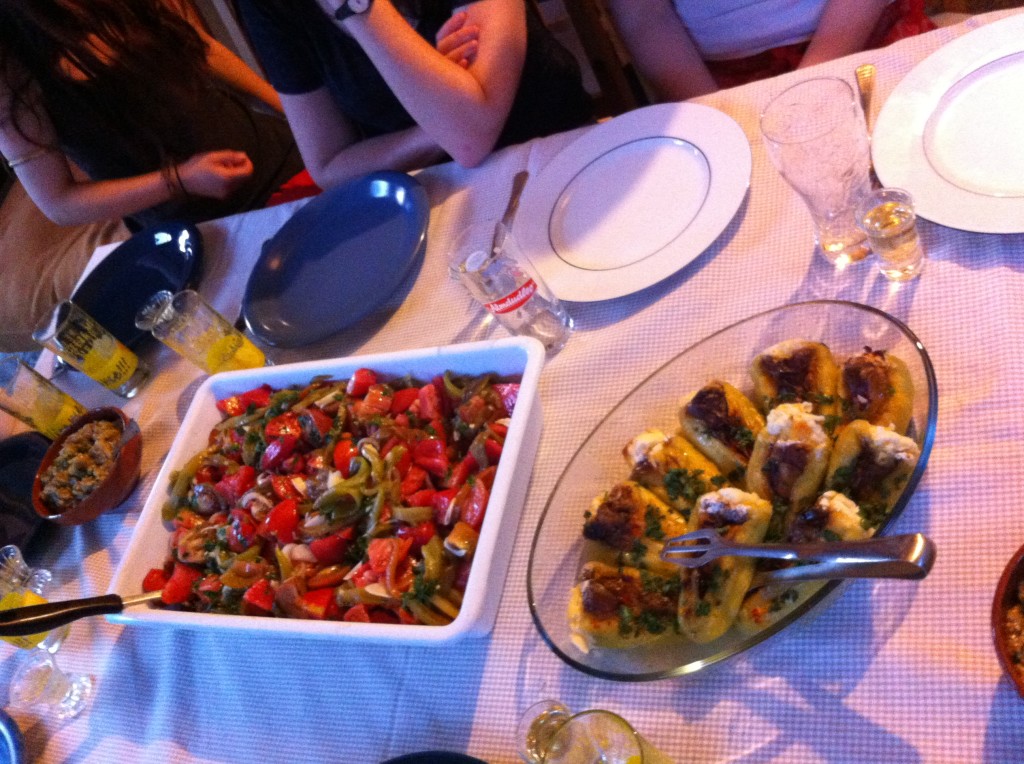
The following day was packed full of visits to beautiful natural landscapes. Firstly, a huge pothole – the Garvanitsa carst pothole, a 60m deep hole in the ground, invisible from a distance, which we cautiously descended down precarious steps. Then it was onto the spectacular Devetaki cave. Archaeological excavations and studies show that this cave was inhabited as early as 70,000 BC, and then also in the Neolithic, Eneolith, Bronze and Iron Age, provincial Roman culture and the Middle Ages. Therefore, it is a site with rich cultural significance and history, as well as being an awe-inspiring natural phenomenon. More visible and modern evidence of human use of the cave, were several huge perfect stone circles. These were once huge pits which stored oil – hidden in this discreet location from the capitalists during the Socialist government. We could still smell hints of petrol.
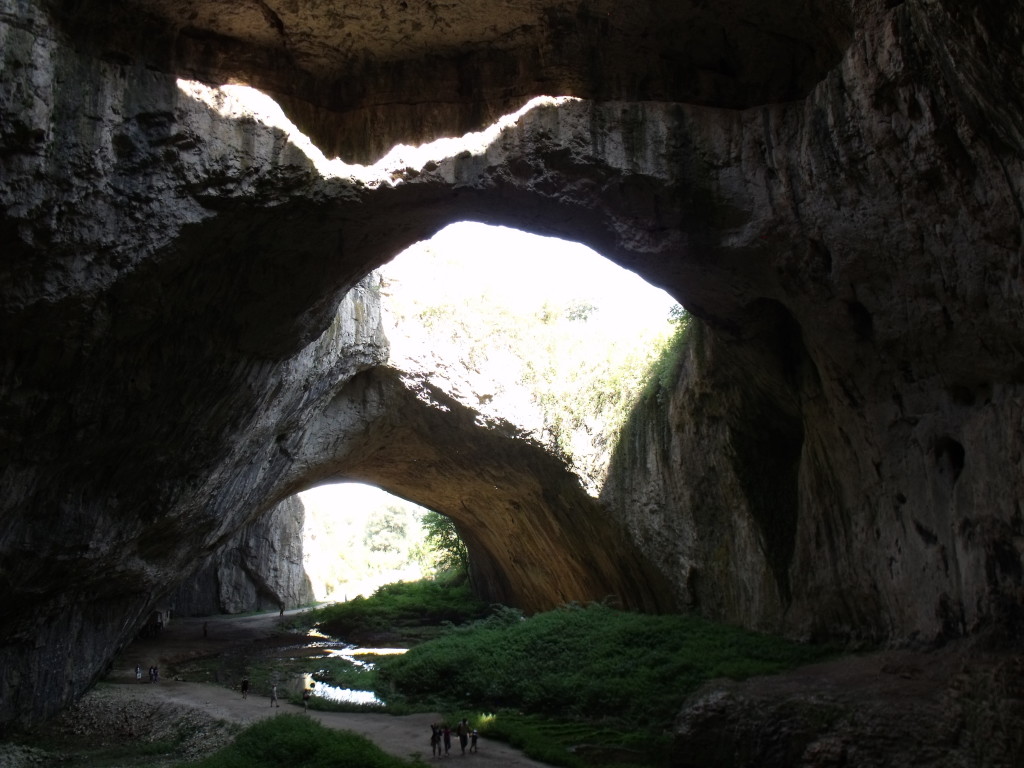
After a visit to the Krushna Travertine cascade waterfalls, yet another beautiful nature spot where we dipped our feet into the cold refreshing pools, we returned to the guesthouse for a quick rest to rejuvenate ourselves in preparation for traditional Bulgarian dancing!
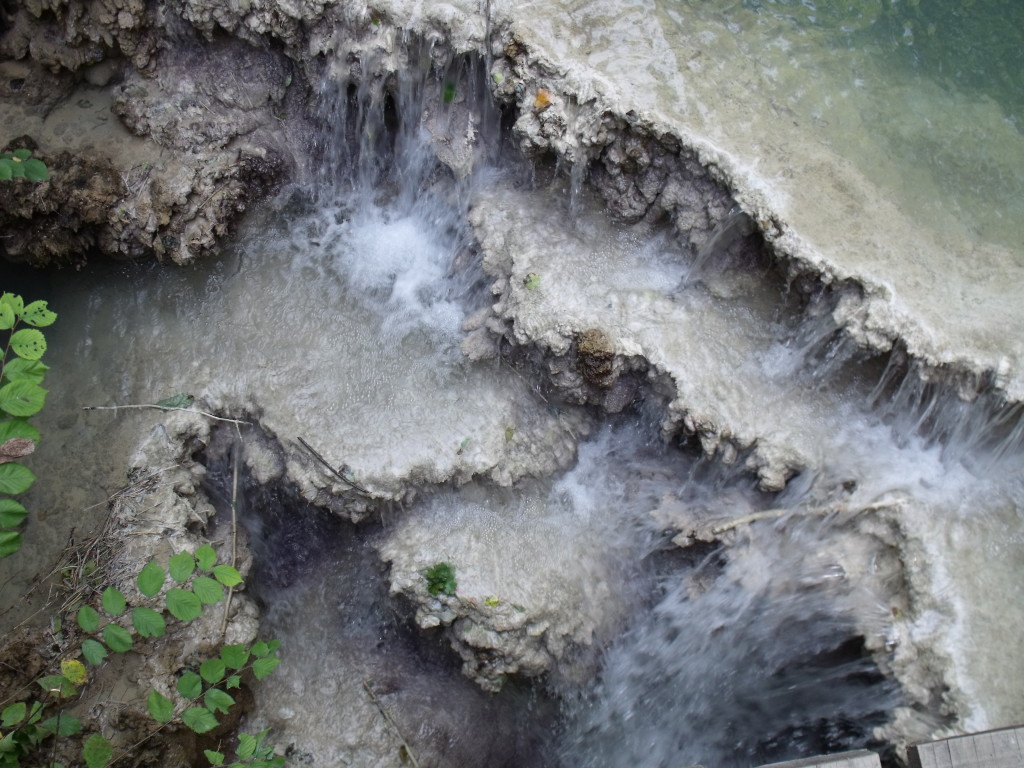
In the big village hall / cultural centre we were taught a few traditional Bulgarian dances by a group of friendly local ladies. We were all given traditional clothing to wear, which for me was a heavy striped woollen skirt and a folk embroidered wool waistcoat, very nice, but very hot for dancing in! An accordionist accompanied us as we attempted to follow the complicated steps of the experts, quite unsuccessfully, but it caused a lot of laughs and entertainment.
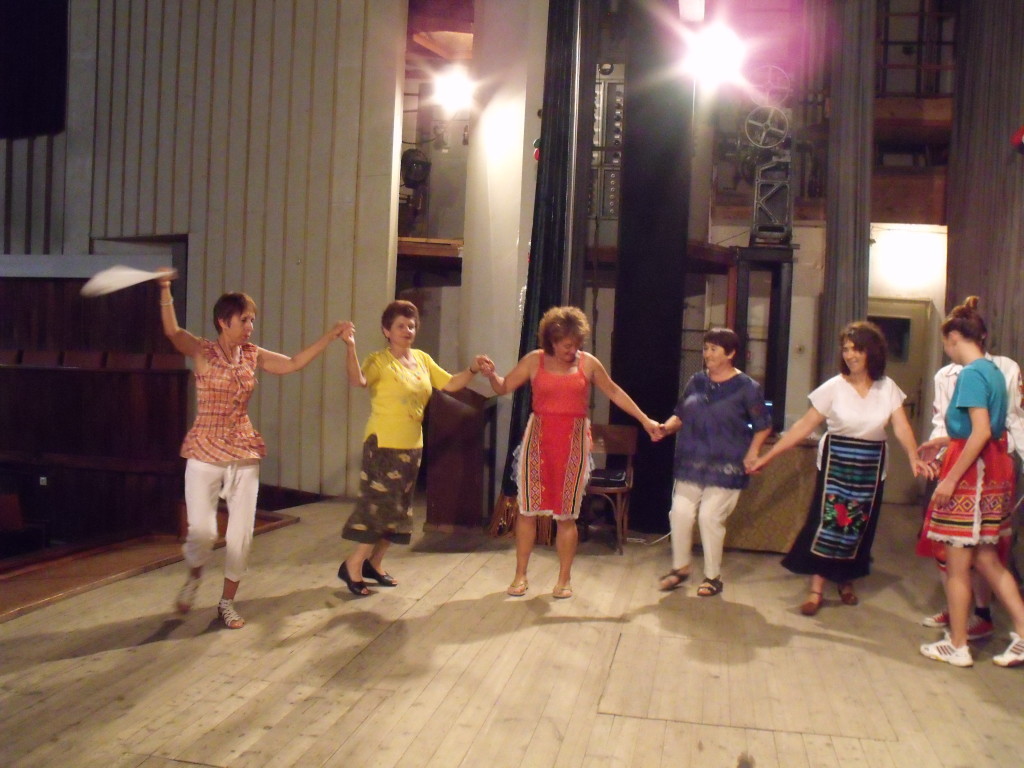
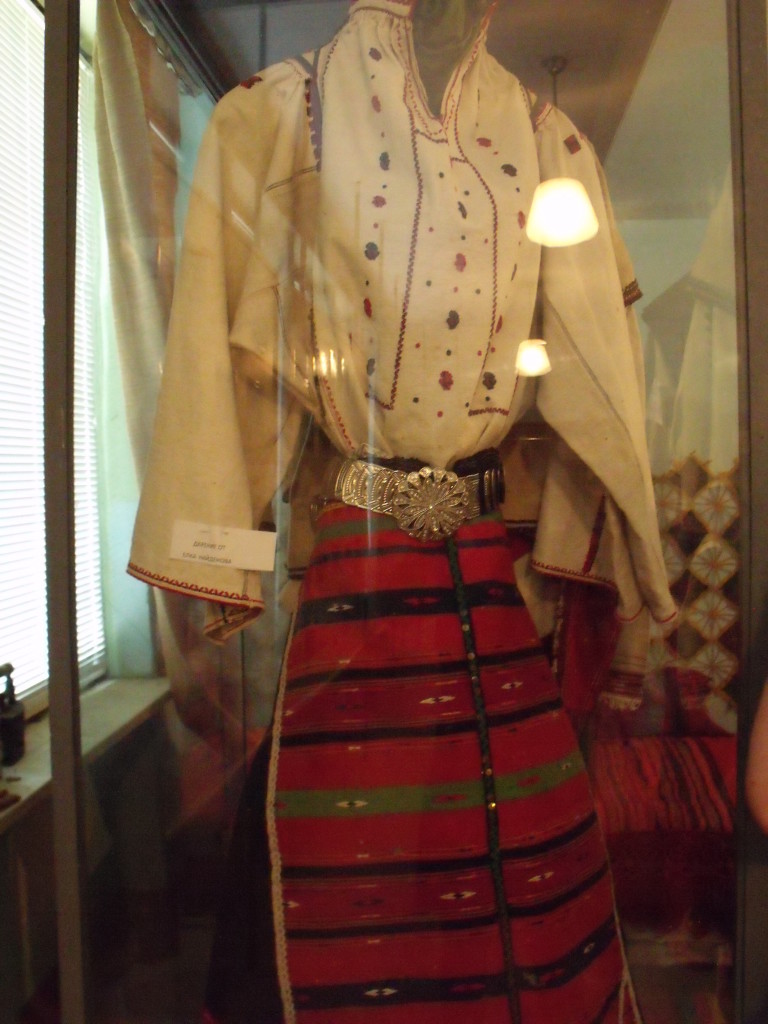
We were also shown around the small museum housed at the top of the cultural centre, a large amount of which was traditional textiles and home-ware, as well as photographs of the village history and significant people.
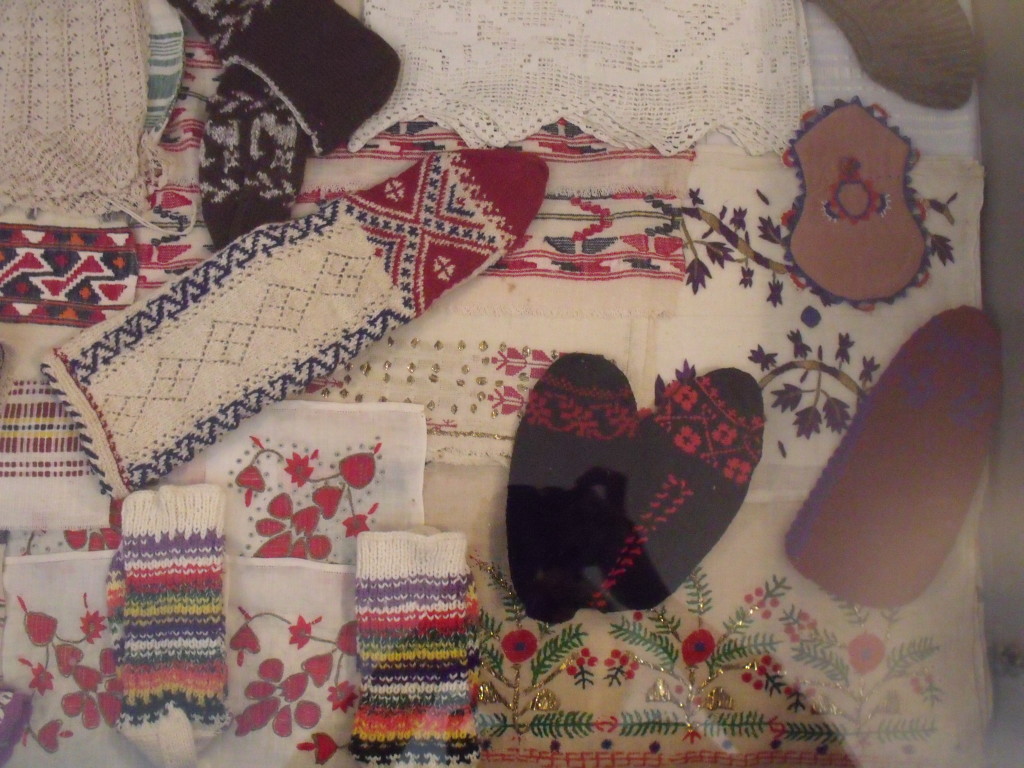
The home-cooked food at our guesthouse was by far the best of the trip, confirmed by this evening’s dinner of yet more delicious salads and barbecue rabbit and pork.
A visit to the Roman town Nicopolis ad Istrum, the following day on the way to Veliko Tarnovo, left us awe-inspired once again and amazed at a complex and intelligently built town of shops and theatres decorated with carvings of worshipped gods, floral patterns and animals.
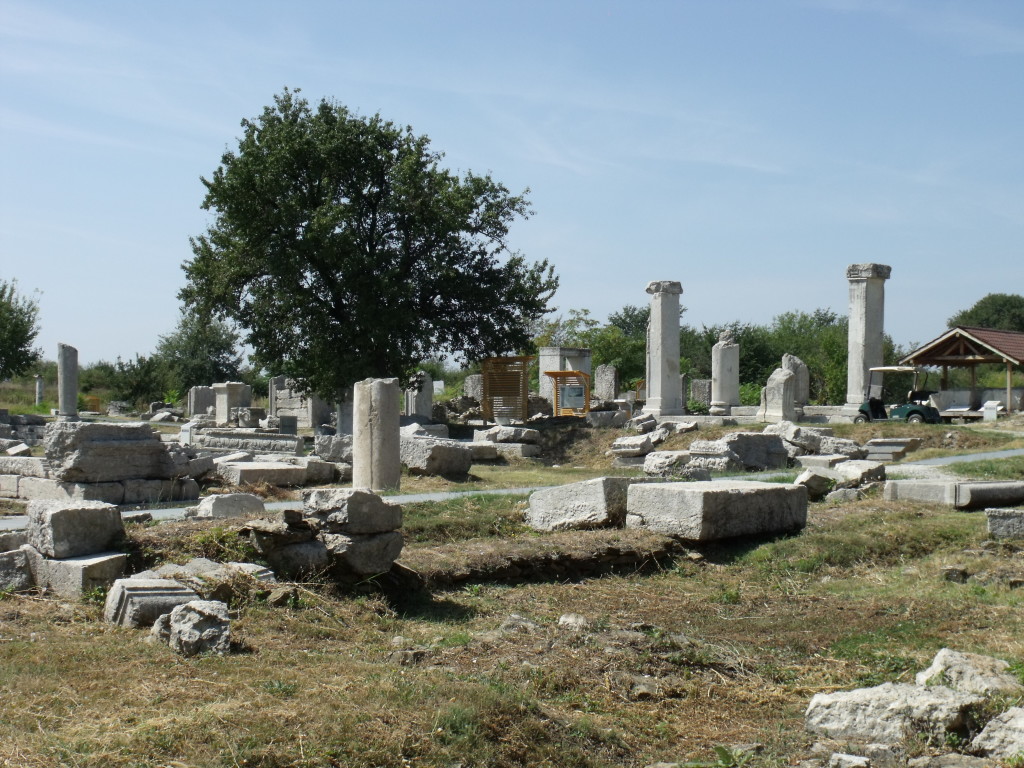

Veliko Tarnovo was the original historic capital of Bulgaria, and it is one of the most picturesque. Tiers of winding cobbled streets lined with traditional wooden beamed houses lie upon a steep hillside, where panoramic views of the valley can be seen. We enjoyed this view whilst eating at a quirky restaurant, the first with English menus we’d seen for a while, as this town attracted much more tourists than the smaller places we had visited previously. As you walk down hill through the old town and reach the edge, you can see a magnificent walled medieval fortress, with, like all medieval fortresses, the main turreted castle standing at the top.
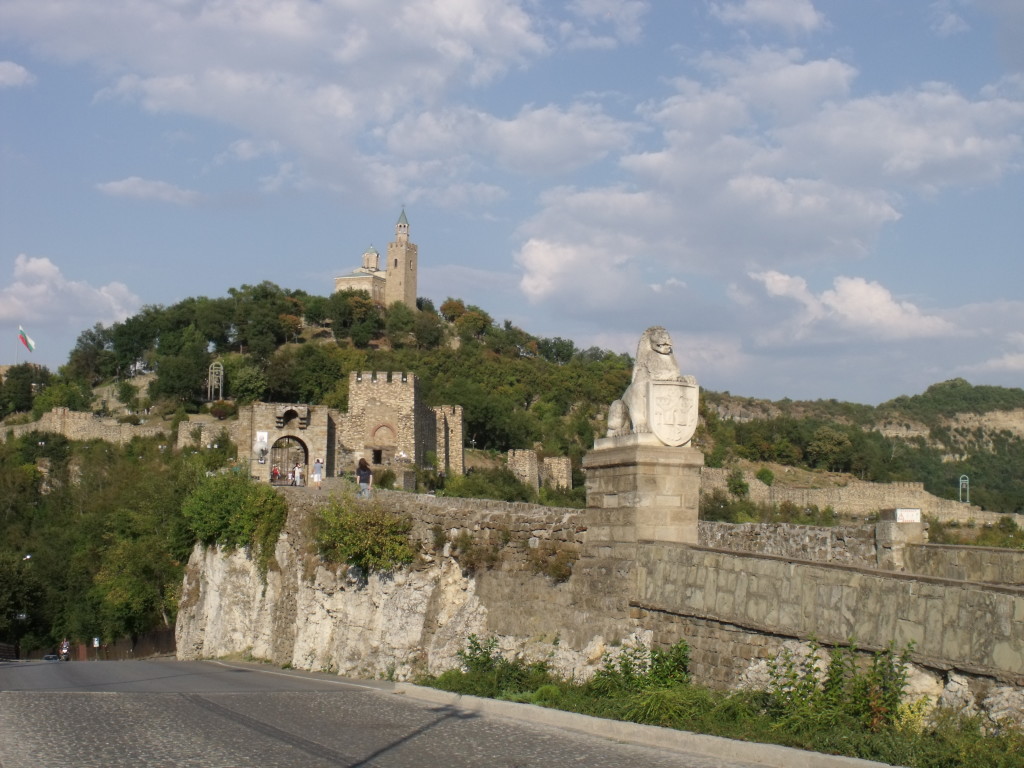
Nestled in the hills surrounding Veliko Tarnovo, just 6 km away, is the quiet village of Arbanassi. While small, the village is full of historical monuments and churches. We had time just to see one, supposedly the best, The Church of the Nativity. Modest from the outside, on entering this church you are faced with walls filled with hugely detailed and well-preserved frescos.
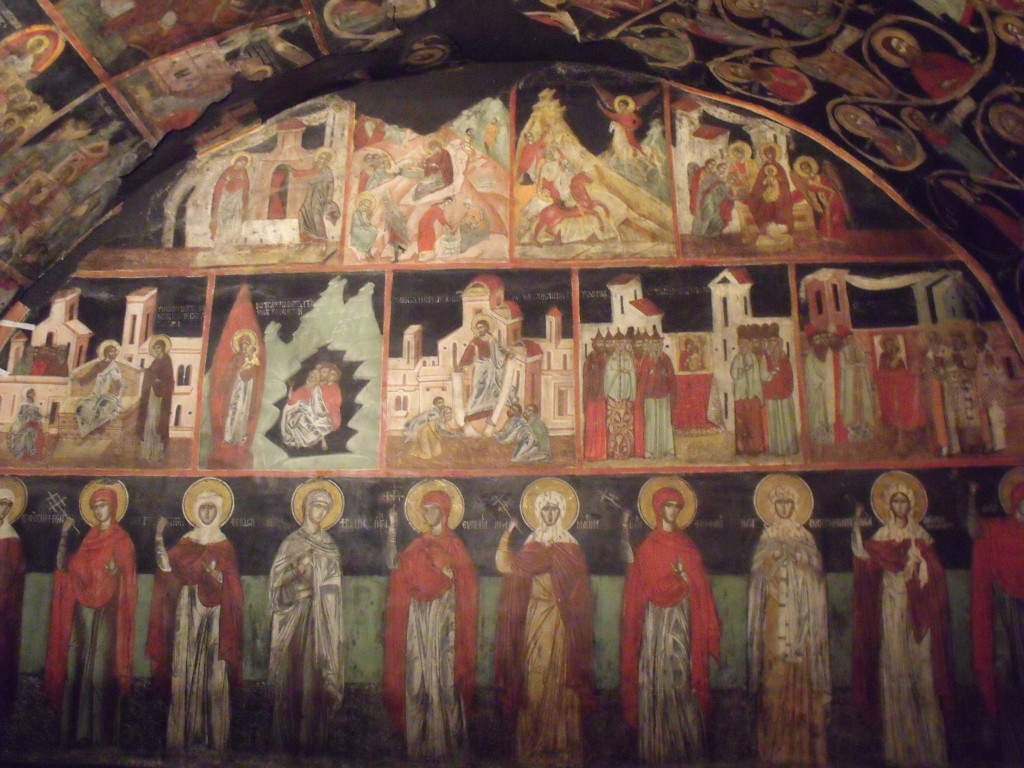
The majority of the images were depicting scenes from the bible. But every so often, you are confronted by a startlingly graphic image, of the judgement day and sinners falling into the depths of hell. It provided an insight into the devout and god fearing way of life in the 16th and 17th centuries.
On return to Veliko Tarnovo, we wandered through the wealth of crafts and antique shops in the old town near to our hotel. It was our first shopping experience and opportunity to see the traditional ceramics, jewellery, icon painting and textiles of this region. I bought a collection of beautiful traditional ceramics painted in a striped dripped glaze. In my next post, I will go into more detail about the traditional crafts, in a review of a replica crafts village / ethnographic museum. I will also review the amazing Thracian Valley and more incredible ancient sites.
